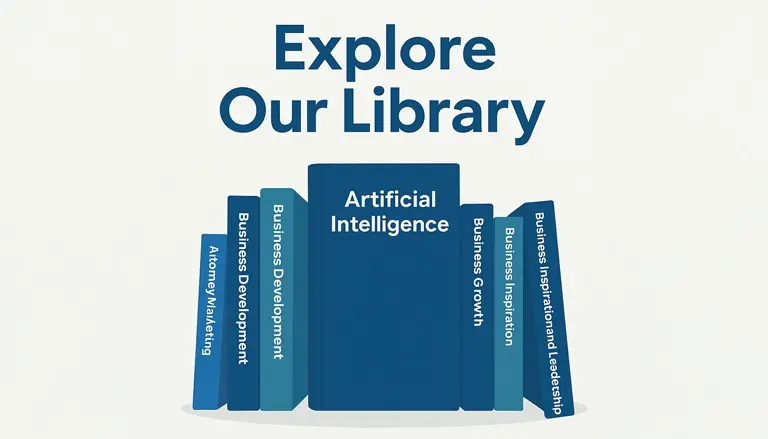

The Role of AI in Marketing Compliance: Friend or Foe?
Posted April 5, 2025 by Kevin Chern
“Technology is a useful servant but a dangerous master.”
— Christian Lous Lange
Case Study: The $1.2 Million Mistake by a SaaS Darling
A rising SaaS startup in Austin scaled fast. Too fast. Their marketing engine fueled by generative AI spit out hundreds of personalized email campaigns per day. Conversions soared. So did complaints.
Within three months, they triggered privacy watchdogs across California and the EU. Why? Their AI failed to filter out unsubscribed users. It also scraped and reused data from third-party APIs without proper disclosures. The result? A $1.2 million fine, a lawsuit from a consumer protection group, and a public trust meltdown.
The kicker? The team thought AI was keeping them compliant.
That’s the paradox: when it comes to marketing compliance, AI can be both watchdog and wild card.
So friend or foe?
Let’s unpack that.
What Business Owners Need to Know in 2025
Marketing compliance in 2025 isn’t just a box for the legal department to tick it’s a multi-front challenge involving:
- Data privacy regulations (GDPR, CCPA, CPRA, LGPD, etc.)
- Advertising standards (FTC, FCC, local jurisdiction rules)
- Email and messaging laws (CAN-SPAM, CASL, TCPA)
- Bias mitigation in ad delivery and personalization algorithms
- Accessibility requirements (ADA)
And when AI enters the mix generative text, predictive analytics, algorithmic targeting it’s like giving a Ferrari to a 16-year-old. Speed meets risk.
Stat: 61% of businesses using AI in marketing faced a compliance-related issue in 2024. (Forrester Research)
How AI Is Being Used in Marketing Today
Let’s take a quick inventory of where AI touches marketing workflows:
- Copywriting: Email subject lines, ad copy, blog content
- Audience Targeting: Predictive lookalike models
- A/B Testing: Multivariate testing on ad creative
- Email Automation: Sequence optimization based on behavior
- Chatbots: 24/7 user engagement and lead qualification
- Voice Search Optimization: Conversational keyword integration
- Compliance Checking: Scanning content for legal risks
Each of these use cases carries both opportunity and exposure. The AI doesn’t just work faster it magnifies whatever assumptions, blind spots, or data errors are baked into its training.
Compliance Risk #1: AI Doesn’t Understand Context
AI is built on pattern recognition, not legal judgment. It may follow logic, but it doesn’t intuit context. That’s a problem.
Example:
A generative AI tool creates a Facebook ad targeting users interested in “recovery resources.” It generates copy that references “addiction struggles” based on historical ad performance. Unfortunately, it violates HIPAA advertising guardrails by implying health status.
Boom: FTC violation.
Fact: The FTC issued more than $785 million in fines in 2024 for deceptive AI-generated advertising. (FTC Annual Report)
Compliance Risk #2: Consent Isn’t Always AI’s Strong Suit
GDPR and CCPA are built on explicit, informed, and revocable consent. AI, meanwhile, thrives on big datasets often pooled from multiple sources, scraped content, or inferred behavior.
Without tight guardrails, your AI might:
- Include unsubscribed users in remarketing
- Pull third-party behavioral data without clarity on consent
- Auto-personalize based on sensitive characteristics like race or disability
Stat: 43% of AI-driven marketing systems fail to respect user data preferences during personalization efforts. (Cisco Data Privacy Benchmark Study)
Compliance Risk #3: Transparency and Explainability
Under GDPR’s “Right to Explanation,” consumers can demand to know how an algorithm made a decision about them.
If your AI suggests a higher insurance rate or withholds a discount based on an opaque algorithm, and you can’t explain it, you’re in legal hot water.
AI models especially black-box neural networks don’t always allow for that clarity.
When AI Helps: The Compliance Assistant, Not Replacer
AI isn’t just a liability. When paired with the right oversight, it becomes your compliance co-pilot.
Use Case 1: Real-Time Content Scanning
AI can flag risky language in ad copy anything that suggests guaranteed outcomes, unsubstantiated health claims, or misleading pricing.
Tools like: Grammarly Business with compliance integrations, Writer, or Microsoft Copilot + Purview extensions.
Use Case 2: Automated Consent Tracking
AI-assisted CRMs can map consent trails for every user, ensuring email or SMS campaigns only reach those who opted in.
Tools like: OneTrust, Osano, and ActiveCampaign with privacy AI modules
Use Case 3: Fraud & Anomaly Detection
AI models can catch anomalies fake leads, bot traffic, payment fraud that often fly under the radar of human teams.
Bonus: AI also helps in redacting PII (personally identifiable information) in support tickets, emails, and live chat.
Fact: Businesses using AI-based compliance tech report 54% fewer privacy-related fines. (McKinsey Digital Trust Survey, 2024)
How Business Owners Should Think About AI and Marketing Compliance
Think of AI as a teenage intern: brilliant, fast, but lacking judgment. You wouldn’t let them launch a campaign without supervision and the same goes for your AI stack.
Here’s a framework to use:
1. Govern Before You Automate
Before implementing AI tools, align with your compliance officer or outside counsel on:
- What data can be used?
- What can’t be inferred?
- Who audits the AI’s decisions?
2. Monitor Outcomes, Not Just Inputs
Your AI model may not “intend” bias, but if it delivers unequal outcomes or misclassifies based on demographics, it’s still a problem.
Track:
- Disparate ad performance by protected categories
- Disproportionate opt-outs from certain audience segments
- Campaign exclusion logic
3. Invest in Explainable AI
The more you can explain the “why” behind an AI action, the better your legal positioning. Even if a regulator doesn’t ask for it, your customers eventually will.
Fact: 73% of consumers say they’re more loyal to brands that explain how they use AI. (Salesforce State of the Connected Customer Report)
Real-World Checklist: How to Stay Compliant with AI in Marketing
| Compliance Area | What to Implement |
| Consent Management | Use AI-powered CRMs that respect user preferences |
| Content Generation | Run legal copy scans before launch |
| AI-Powered Ads | Train AI on bias-free datasets, exclude sensitive traits |
| Email/SMS Campaigns | Automate opt-out syncing with user preferences |
| Vendor Selection | Require clear AI compliance policies in contracts |
| Documentation | Store logs of AI decisions and campaign logic |
Emerging Laws to Watch in 2025
- AI Act (EU): Classifies marketing use of AI as “high risk” if it impacts economic opportunity or pricing.
- U.S. Algorithmic Accountability Act: Requires annual audits of AI systems affecting consumers.
- California’s CPRA Update: Expands “automated decision-making” to cover ad personalization.
Expect more to follow. What GDPR did for privacy in 2018, these new rules will do for AI in the next 12 months.
The ROI of Responsible AI
Here’s the real kicker: AI compliance isn’t just legal protection it’s a competitive moat.
- Trust becomes your brand differentiator
- Customer satisfaction rises with better data use transparency
- Reduced fines + legal spend boost profitability
Stat: Companies rated as “highly responsible AI users” saw 24% higher customer retention year-over-year. (Harvard Business Review, 2024)
Final Thoughts
AI isn’t a villain it’s just misunderstood. Used wisely, it can make your marketing faster, smarter, and more compliant than ever before. But left unchecked, it’s a compliance time bomb ticking under your campaign dashboard.
So here’s the real question:
Are you using AI to elevate your marketing or to accelerate your exposure?
Tags:




